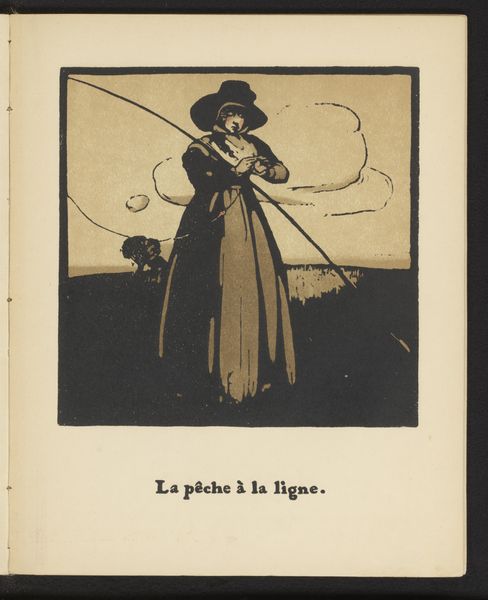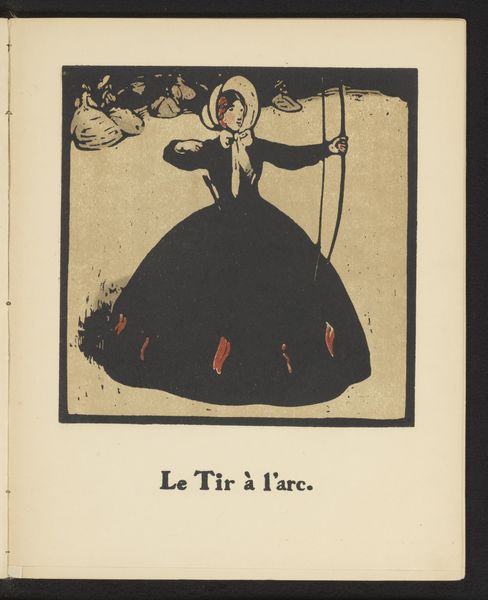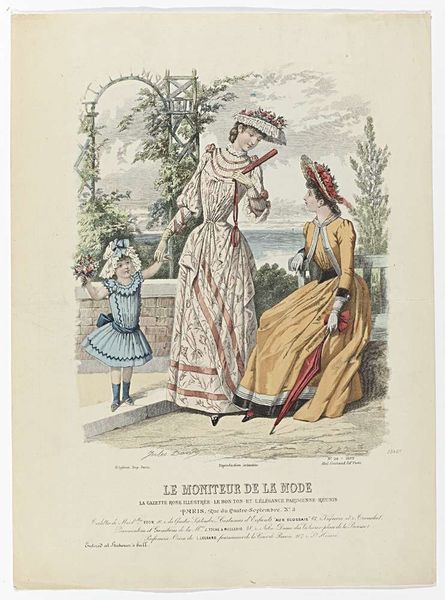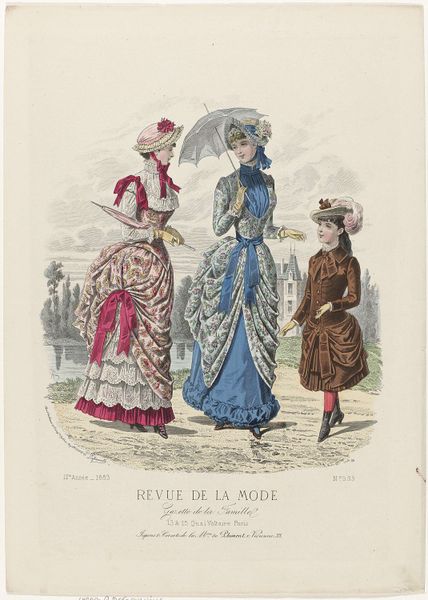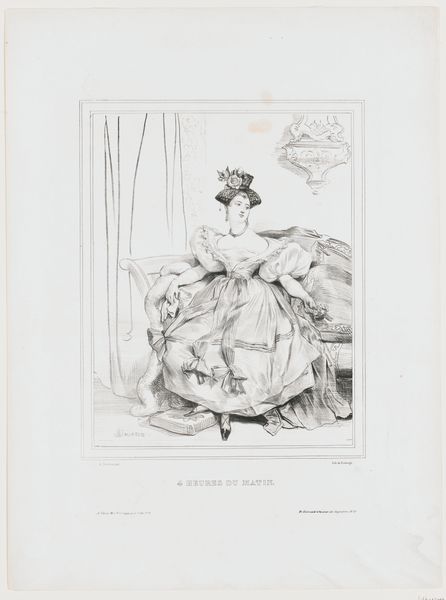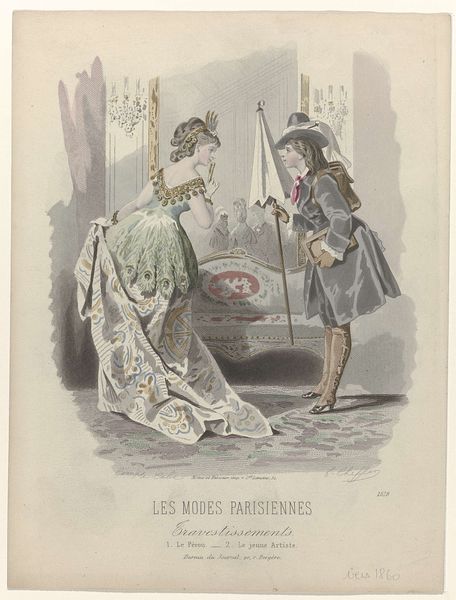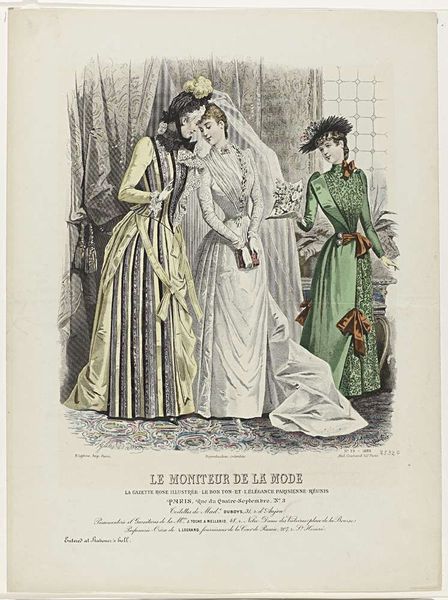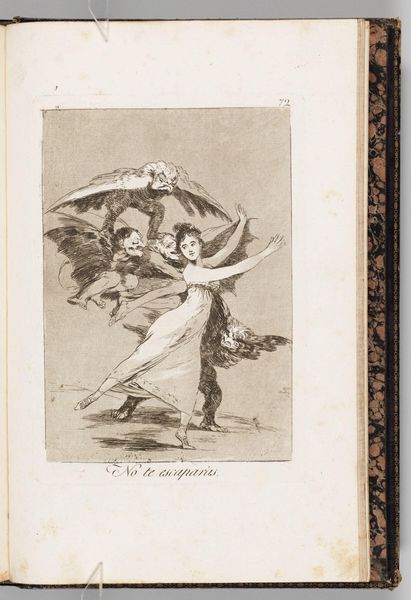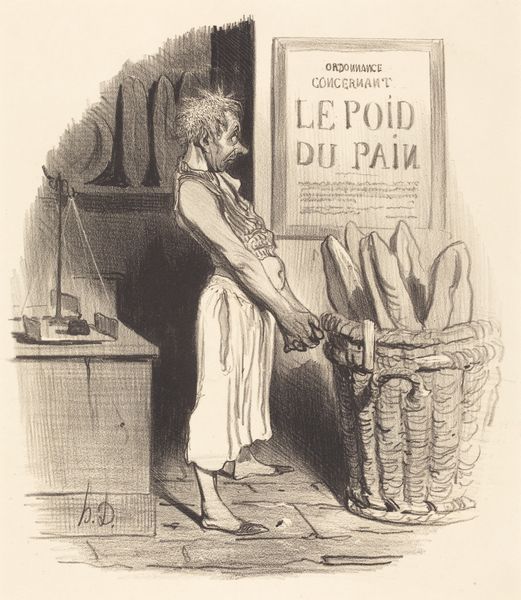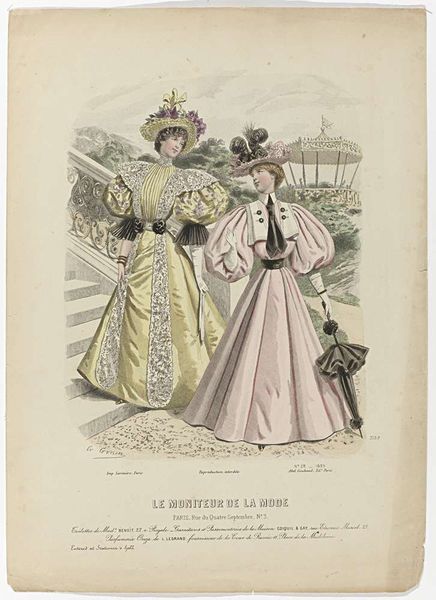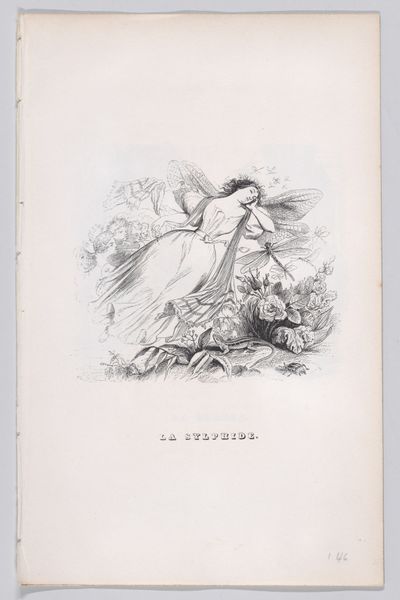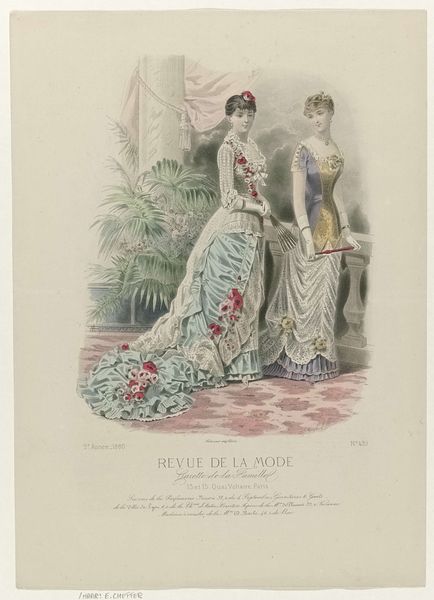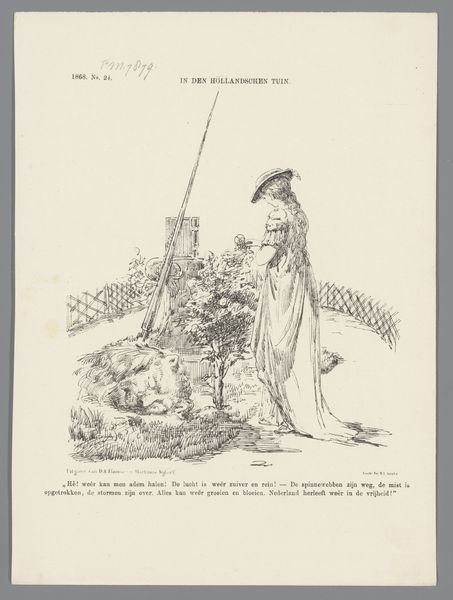
drawing, print, ink
#
portrait
#
drawing
#
art-nouveau
# print
#
old engraving style
#
figuration
#
ink
#
ink colored
#
sketchbook drawing
#
watercolour illustration
Dimensions: height 246 mm, width 191 mm
Copyright: Rijks Museum: Open Domain
Curator: Here we have "Gazette du Bon Ton, 1914 - No. 4: Éloge de la Cape" by Paul Mèras. It's an ink and watercolour illustration, originally a print for a fashion magazine. Editor: The cape! What strikes me is how fluid the lines are. It's so delicate, like spun sugar, and that giant ruff. There's a lightness to the material that’s quite seductive. Curator: The "Gazette du Bon Ton" was known for its idealized representations of Parisian fashion and society. This image, with its elegant woman and flowing cape, perfectly encapsulates the Art Nouveau aesthetic and the lifestyle it promoted. Editor: It makes me think about the production of beauty in this period, not just the garment, but the craft and skill embedded in producing the magazine itself, the etching process, and the application of colour to capture the cape’s luminous texture. It reflects hours of labor! Curator: Indeed. Magazines such as these played a critical role in shaping tastes and disseminating fashion trends to a wider, upper-class audience. These weren't just illustrations; they were tools in a fashion economy. They instructed women how to consume, how to emulate Parisian style. Editor: Consumption, yes, but what about the human touch, the artisanal element? Look at how those tassels swing; there's a sense of movement, even narrative. It moves past mere consumerism. This magazine functions to elevate and advertise artistry in both production and the article of clothing itself. Curator: That's certainly an appealing thought. It does invite a lot of social commentary about value, the value of female appearances. Editor: Absolutely, Paul Mèras manages to celebrate both labour and consumption in the same print. Curator: Very good points, seeing beyond the fashion itself to its manufacture adds another layer of richness and also highlights it in social history. Editor: Precisely, it brings an interesting texture, adding to what would otherwise be surface!
Comments
No comments
Be the first to comment and join the conversation on the ultimate creative platform.
